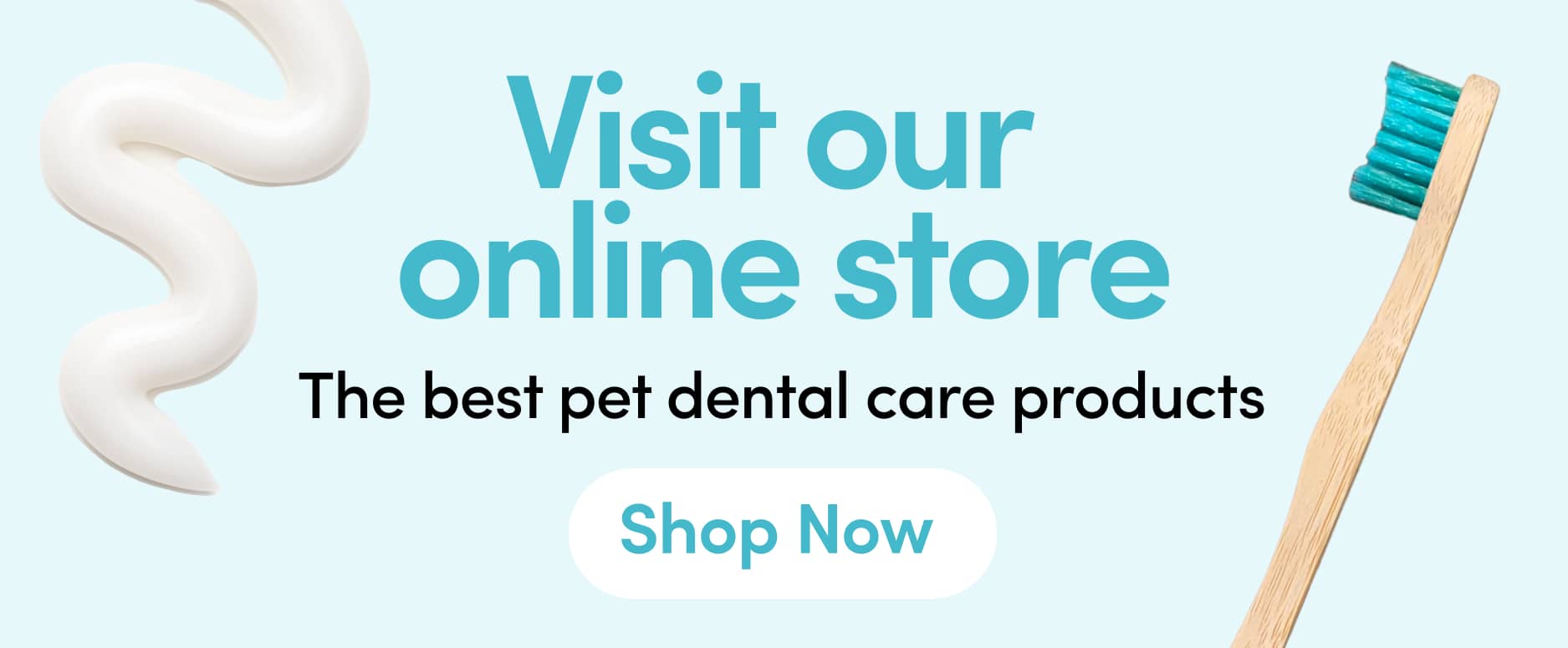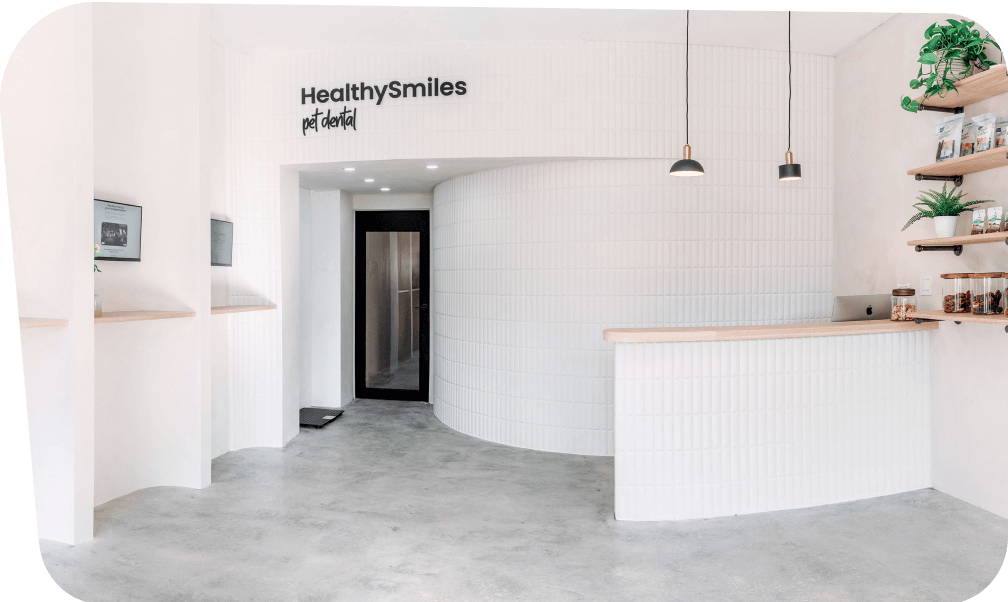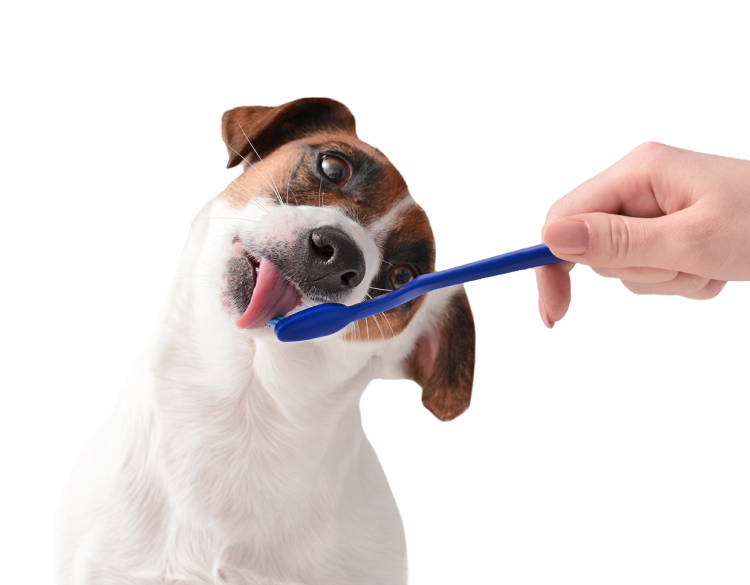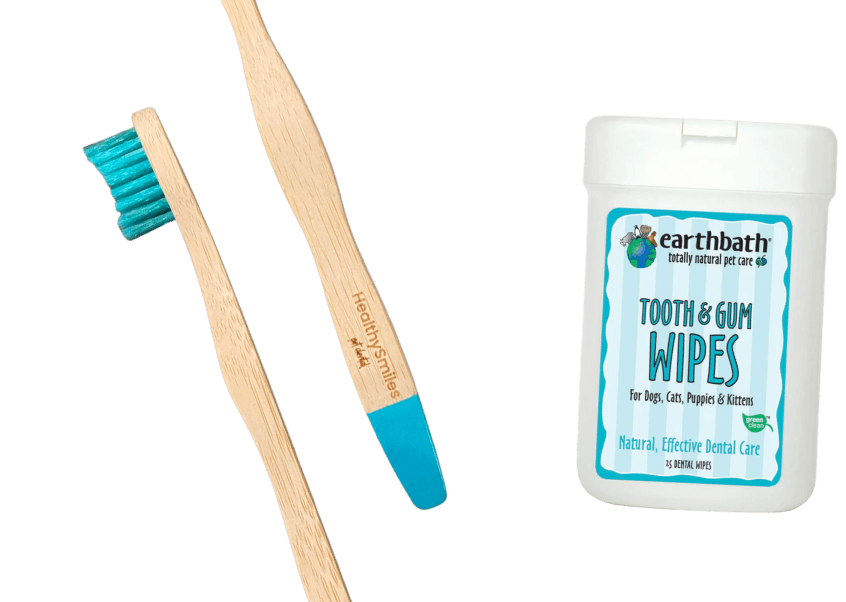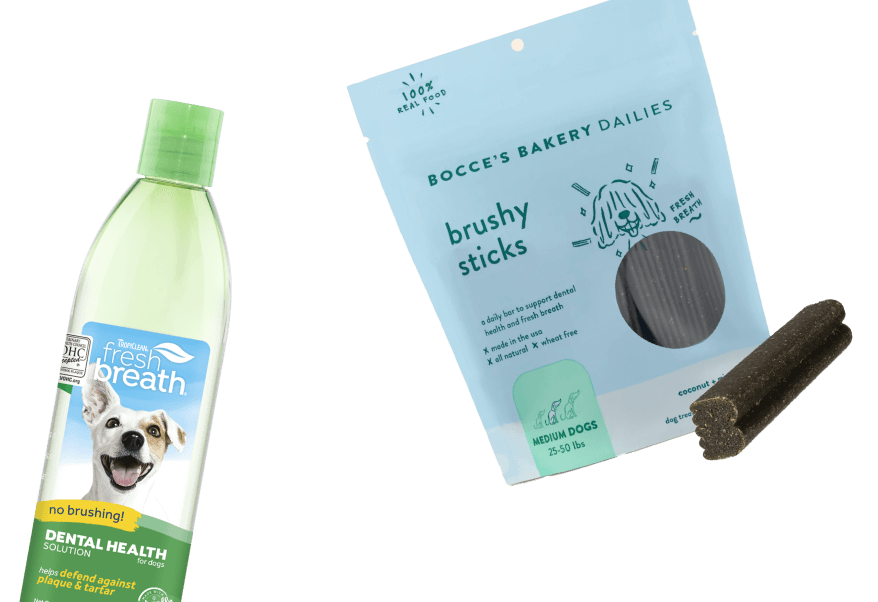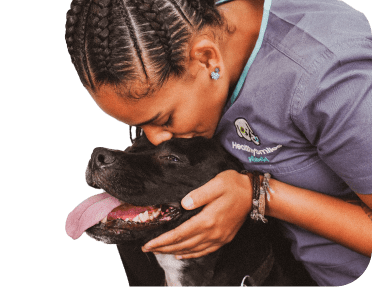Pet Teeth Cleaning with vs without Anesthesia
September 9, 2020How do you decide which procedure is right for your pet?
For dog and cat patients with periodontal disease, the treatment goal is the removal of plaque and calculus from the teeth. General anesthesia is necessary to provide access to the subgingival areas, where bacteria can contribute to local and sometimes systemic inflammation. There are a wide range of issues including extractions, fractured teeth and dental radiology that require an anesthetic procedure.
However, a veterinarian may not want to anesthetize a medically compromised pet, and they will instead use a non-anesthetic procedure to clean a dog or cat’s teeth. The other goal of a non-anesthetic dental cleaning is to prevent periodontal disease in a healthy dog or cat. You can have your pet’s teeth cleaned without anesthesia whether they’re young and healthy or have health issues.
Non-anesthetic dental cleanings complement anesthetic dental procedures and are primarily recommended as prevention and maintenance.
Veterinary dental cleanings under anesthesia address oral health problems that sit mainly under the gums and require more intensive care.
Anesthesia free cleanings are not a substitute for dental procedures where anesthesia is involved. Non anesthetic dentals focus on removing plaque from the visible part or crown of the tooth.
With that in mind, you can see there are clear differences between a non-anesthetic and an anesthetic dental cleaning for pets.
Here are 8 main differences between non-anesthetic and anesthetic dental cleanings:
Without Anesthesia
With Anesthesia
When is it needed?
Every 6 months to maintain dental health
When is it needed?
As recommended by your veterinarian
Procedure Time
45 minutes
Procedure Time
4 to 8 hours (including recovery time)
Down Time
No down time
Down Time
Recovery time after procedure
Medications
No medications are used
Medications
Sedatives and general anesthesia (both IV and inhaled) are used
Lab Tests
Doesn’t require prior lab tests
Lab Tests
Requires pre-anesthetic lab work to make sure pet’s internal organs can support general anesthesia
Pricing
$179 – $269 depending on the pet’s size
Pricing
$600 to $1,200 depending on the procedure
1. When is it needed?
Anesthetic: Anesthetic dental cleanings are required for severe periodontal disease. Also, when teeth need to be extracted, the use of sedation is required to avoid severe pain. If there is a complicated tooth fracture or an emergency your pet will likely need to be anesthetized.
In this article you’ll find more details about anesthetic dental cleanings for pets and a list of reasons for when it’s strictly necessary.
Non-anesthetic: These procedures are completely safe! Non-anesthetic dental cleanings don’t require blood work or medication, there are no side-effects and no recovery time. These are performed by dental technicians. Some states do require a veterinarian present while the procedure is being performed.
2. Overall procedure time
Anesthetic: These can take up to six hours including recovery time. The time depends on what’s involved during the teeth cleaning. For example, dental extraction procedures can take anywhere from 1 to 2.5 hours.
Non-anesthetic: Dentals performed without anesthesia are typically done by a qualified veterinary technician. These can take from 45 minutes up to an hour – no recovery time needed.
3. Recovery time after the procedure
Anesthetic: If your pet was not anesthetized and their treatment was anesthesia-free then there isn’t any ‘recovery’ time. Always watch your pet after any procedure to ensure there isn’t any discomfort and talk with the dental technician if there seems to be anything out of the ordinary going on with your pet.
Non-anesthetic: If your pet did have an anesthetic dental procedure you should prepare a quiet and comfortable area for them to rest after surgery. Your pet should begin recovering from the anesthetic within a few hours, though it can take 24-48 hours to fully recover. Expect the pet to be lethargic and groggy.
TIP: Sometimes pets experience trouble walking, nausea, and vomiting. Always call your veterinarian if you notice your pet is not recovering well from anesthesia as this might be a serious medical concern.
4. Medications and overall pain management
Anesthetic: During the procedure, sedatives and general anesthesia (both IV and inhaled) are used.
After the procedure if there is an infection your vet may give or prescribe an antibiotic. Pain medication may also be provided as there can be some level of inflammation and discomfort.
Non-anesthetic: Non-anesthetic: No medications are used and pet parents are asked not to administer any sedatives including Benadryl.
5. Pre-anesthetic lab work
Anesthetic: Before your dog or cat is scheduled for general anesthesia your veterinarian will recommend lab work or blood tests.
According to VCA Hospitals, pre-anesthetic blood work will show any abnormalities to allow adjustments to be made in the pet’s treatment plan.
Non-anesthetic: There are no diagnostics like blood work required prior to anesthesia-free dental cleanings.
6. Cost
Anesthetic: A cleaning with anesthesia will range from $400 to $1,000 depending on the procedure.
Non-anesthetic: Non-anesthetic dentals range from $179 – $269 depending on the pet’s size
Go here if you want to see a cost breakdown of HealthySmiles non-anesthetic dental cleanings.
7. Are there any potential risks from complications?
Anesthetic: Anesthesia isn’t entirely risk free. To reduce the risk of complications and ensure that anesthesia doesn’t pose a health threat, every pet is examined and evaluated for their health status and physical condition before being anesthetized.
The most common complications include low blood pressure, decreased heart rate, shallow breathing, and decreased body temperature
According to the Preventive Vet. Your veterinarian will closely monitor your pet while they’re under anesthesia.
Non-anesthetic: These procedures are very short and your pet will not experience the level of stress they may have after being dropped off at a clinic for an anesthetic dental cleaning.
8. How often does your pet need a dental cleaning?
Anesthetic: All pets should have their teeth examined by a veterinarian at least once a year. They will determine if there are any complications that need to be addressed under general anesthesia.
Non-anesthetic: An anesthesia-free dental cleaning should be done every 6 months with few exceptions.


